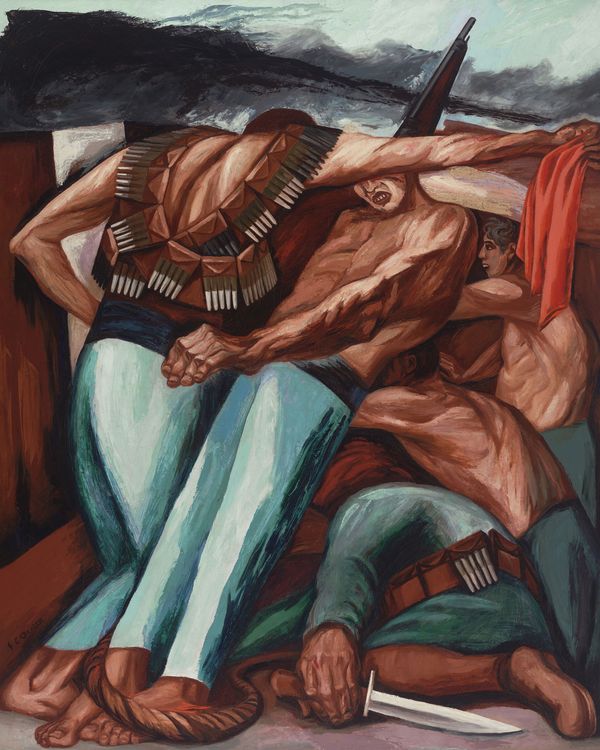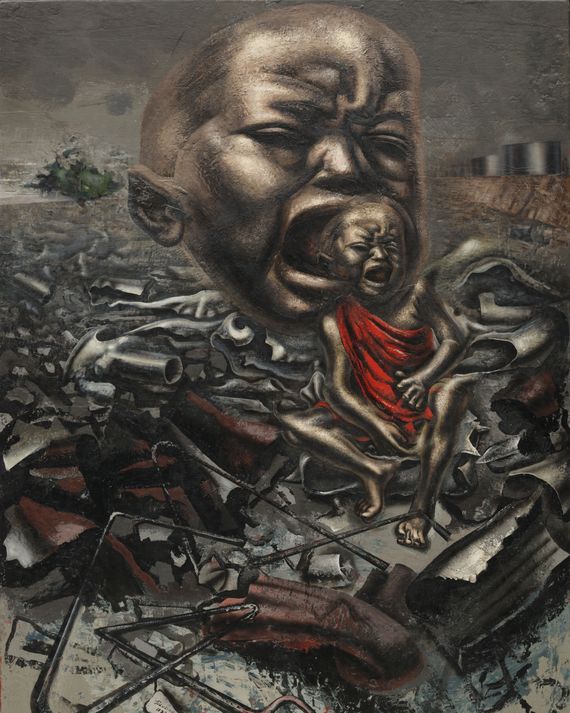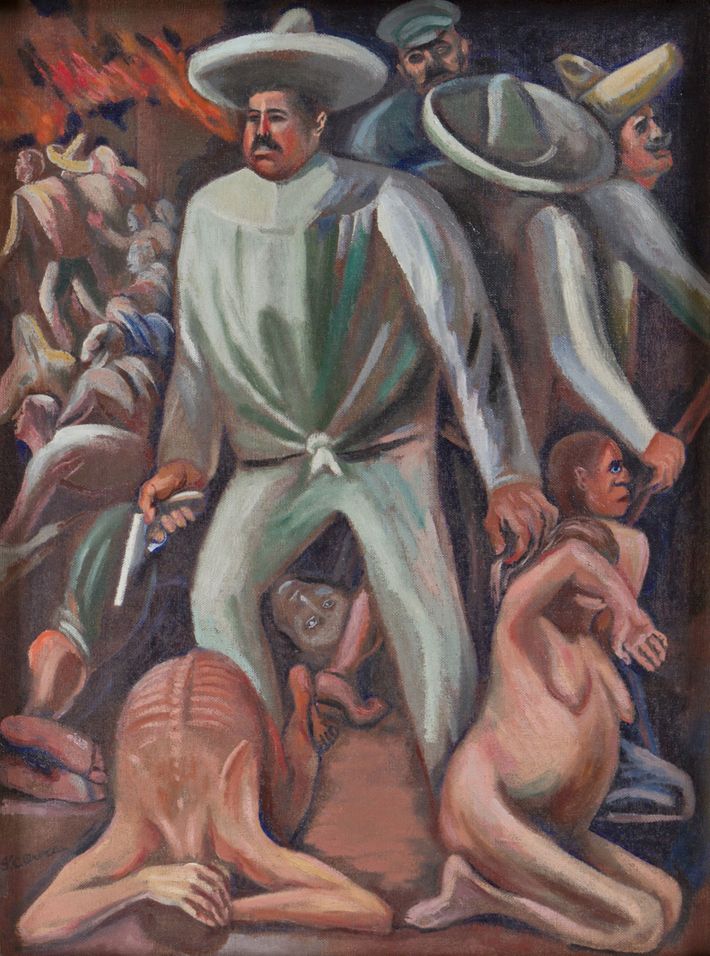
This is the most relevant show of the 21st century — the Whitney Museum’s “Vida Americana: Mexican Muralists Remake American Art, 1925–1945,” which gathers together the adamantly political public art of Diego Rivera, Frida Kahlo, David Siqueiros, José Orozco, and others.
Once upon a time these artists were called “the greatest Renaissance in the contemporary world” whose art made “the aesthetic experiments of Paris … [seem like] trifling matters.” I agree — those years were extraordinary. The muralists’ painterly montage compositions reimagined the social order in high-keyed color with in-your-face wall power. Along with the recent “Posing Modernity” (focusing on black models in modern art) at Columbia’s Wallach Gallery and “Hilma af Klint” at the Guggenheim, art history looks different after this show. Not least for showing the influences that this still too-little-known art exerted on the rest of the world before it was, as the catalogue puts it, “written out of American art history.”
How were they written out? First, in the early 1930s, when President Herbert Hoover railed about “American jobs for real Americans,” and some 1.8 million people were deported and “repatriated.” Even American artists sent letters of protest when Mexican muralists received commissions — forgetting that these were not immigrants but were visiting dignitaries. (The long American night is always a factor in art history.) Next, World War II and its Cold War aftermath made their art forbidden for its “communist sympathies.” And because these artists often painted huge murals, their art isn’t always portable and so not seen as much in museums. But American artists of the time, looking for a way around Picasso, were ultra-aware of what the Mexicans had on offer. Seeing early Philip Guston reconcile new subject matter into his art and all the so-called bad, early pre-drip Jackson Pollock paintings that wrestle the lessons of the Mexicans into dense configurations of mythic subject matter are both mind-boggling shows within a show and remap the trajectory of American painting.
“Vida Americana” gives us artists who were being modern without Cubism or abstraction — who instead reconstituted these and much else into entirely new aesthetic languages that still offer possibilities today. For me — and I hope artists — the aesthetic takeaway of “Vida Americana” is that the art here is so formally, physically, and visually convincing that it proves that “good subject matter” does not automatically make good art. Instead, this art insists that “good subject matter” requires original form.
At the Whitney you’ll see big figurative paintings with raking diagonal, dramatic foreshortened, and full-frontal compositions, Hellenistic by way of Aztec, with Mesopotamian and Renaissance monumentality. The rigid blockiness of the bodies and flat, shallow space comes from Egypt, Rome, and Giotto — everyone is posed, purposeful, determined, overdetermined, extremely theatrical. This is meant as a readable visual vernacular that arcs through but then bolts in every direction outside the confines of the avant-garde art world. See huge crowds marvel at and decipher the work at the Whitney. In contrast to the abstract grids, squiggles, monochromes, nudes, still lives, landscapes, and more nudes of the European modernists, the Mexicans painted social and political life laced with 10,000 years of art history. At this show you’ll see paintings of peasants, politicians, factory workers, child labor, race riots, economic injustice, the slave trade (the most barbarian phrase in any language), totalitarianism, guerrilla warfare, Poncho Villa, Henry Ford, Zapata, Lenin, Sojourner Truth, martyrs of the revolution, and images that point to the genocide of 90 percent of the pre-Columbian indigenous population (thought to be as many as 100 million people).
The show revolves around “los tres grandes,” “the three greats”: Rivera, Siqueiros, and Orozco. My hands-down fave is Siqueiros — who joined the Mexican Revolutionary Army at 18, then the Communist Party, was jailed in and exiled from Mexico, and mentored artists Jackson Pollock and Philip Guston — whose mad paintings look like end-time raptures. His are among the most physically original and innovative paintings of the 20th century. (Talk about undervalued: The art market is so idiotic that a small drawing by Siqueiros can be bought for less than $2,000, while the latest MFA artist can sell for ten times that.) He was showing Pollock how to drip, splatter, smear, attack the canvass, and overlay skeins of paint in the 1930s! (All this wasn’t invented out of the forehead of Pollock, who called a Siqueiros work “the greatest painting done in modern times.”)
In 1922, Siqueiros published a manifesto addressed to, among others, “Painters and … the indigenous races humiliated through centuries; to the soldiers converted into hangmen by their chiefs; to the workers and peasants who are oppressed by the rich; and to the intellectuals who are not servile to the bourgeoisie.” Art was blood sport for Siqueiros. He and his cohorts meant business. He wanted to “overthrow [the] old … inhuman system within which you … produce riches … while you starve.” Then he went after art, “We repudiate the so-called easel art and all such art which springs from ultra-intellectual circles, for it is essentially aristocratic … Art must no longer be the expression of individual satisfaction, but should aim to become a fighting, educative art for all … public property … valuable to the people … for all.” This could almost have been written by artists today looking for ways to address the politics of social and economic crisis.
The greatest colorist and most famous of the los tres grandes is the preternaturally talented Rivera, who called himself a “guerrilla fighter,” and is perhaps better known today as the womanizing Mr. Frida Kahlo. (She called him “evil fat toad.”) Born in 1886, Rivera’s succulent undergrowths of green and social subject matter send an SOS to the world, at as large a scale possible. (He studied in Paris, and before he broke ranks, was a great Modernist.) At the Whitney, Rivera’s simple line drawings, especially, bring us eyeball-to-eyeball with larger-than-life pictures of Mesoamerican deities, lynched bodies, men with beaten backs, Zapata planting his foot on the sword of a dead soldier. American artists flocked to Mexico to see other efforts by these artists. Critics wrote that they had “brought painting back to its vital function in society.” Soon the Mexican artists were being commissioned to create monumental frescoes all over the U.S.
In 1932, Rivera accepted a commission from Edsel Ford, son of Henry Ford, to create a gigantic, wraparound mural called Detroit Industry — featuring the massive River Rouge Ford car plant. Rivera depicted masses of humanity at work, winding pipes, stamping presses, the making of the V-8 engine, car chaises, iron smelting, the production line, a portrait of Ford, and Coatlicue, the ancient Aztec creating and destroying goddess. That’s when the art world turned on him, and Rivera was denounced as a counterrevolutionary who had abandoned the revolution by accepting commissions from rich capitalists. Siqueiros blasted him as a demagogue, mental tourist, opportunist, saboteur, Morgan of the Mexican art market. It was Twitter cancel culture almost a century before the fact. Indeed it lingers: I met two young women in the show who rebuked Rivera for being “an artist of rich people.” A chilling coincidence, then, that “Vida Americana” opened almost 86 years to the February 1934 day that Rivera’s huge mural in the lobby of the RCA Building at Rockefeller Center at 53rd Street was destroyed by jackhammers after he refused to paint over a portrait of Lenin. Back then, New York Sun critic Henry McBride sniffed, “When politics comes to the door, art flies out the window.” As with so many critics writing today, he completely neglected that, at its best, art and politics are often inseparable.




